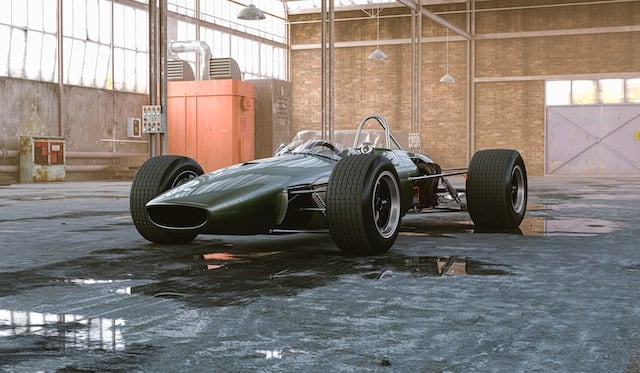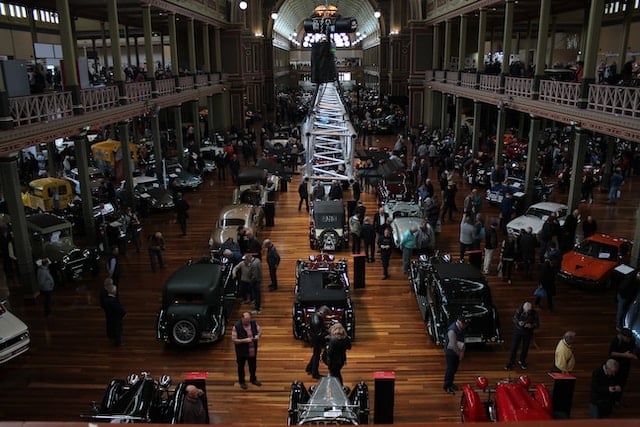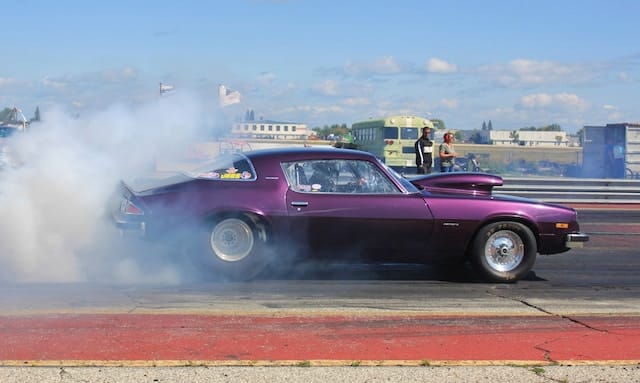
Car shows have long been a celebration of automotive excellence, showcasing the finest examples of engineering, design, and craftsmanship. At the heart of these events are the various categories for awards, which serve to recognize the hard work, dedication, and passion of the participants. In this article, we will delve into the world of car show awards, exploring the different categories, the judging criteria, and tips for participants to excel in their chosen fields.
Understanding Car Show Award Categories

The process of categorizing cars for awards begins by considering factors such as age, make, model, and condition. This allows judges to evaluate and compare vehicles based on similar characteristics, ensuring a fair and unbiased competition. Additionally, these categories help to highlight the diverse range of automobiles present at the show.
[lasso id=”5401″ link_id=”1787″ ref=”amzn-noco-boost-plus-gb40-1000a-ultrasafe-car-battery-jump-starter-12v-battery-pack-battery-booster-jump-box-portable-charger-and-jumper-cables-for-6-0l-gasoline-and-3-0l-diesel-engines-gray” sitestripe=”true”]Common Categories in Car Shows
Classic and Vintage: Pre-1940s Cars
This category features some of the earliest and rarest vehicles, celebrating the rich history and evolution of the automobile.
Antique Cars: 1940s-1960s
These vehicles represent the post-war era, showcasing the rapid advancements in design and technology that shaped the automotive industry during this time.
Muscle Cars: Mid-1960s-Early 1970s
This category pays homage to the power and performance of American-made cars, characterized by their distinctive styling and large, powerful engines.
[lasso id=”5401″ link_id=”1788″ ref=”amzn-noco-boost-plus-gb40-1000a-ultrasafe-car-battery-jump-starter-12v-battery-pack-battery-booster-jump-box-portable-charger-and-jumper-cables-for-6-0l-gasoline-and-3-0l-diesel-engines-gray” sitestripe=”true”]Modern Classics: 1970s-1990s
These vehicles bridge the gap between classic and contemporary, reflecting the ongoing innovations and design trends that have shaped the automotive landscape.
Contemporary Cars: 2000s-Present
This category highlights the latest in automotive design and technology, showcasing the vehicles that define the current era.
Custom and Modified Cars
A celebration of creativity and individuality, this category features vehicles that have been extensively modified or customized to reflect the owner’s unique vision.
[lasso id=”5415″ link_id=”1789″ ref=”amzn-astroai-tire-inflator-portable-air-compressor-air-pump-for-car-tires-car-accessories-12v-dc-auto-pump-with-digital-pressure-gauge-100psi-with-emergency-led-light-for-bicycle-balloons” sitestripe=”true”]Exotic and Luxury Cars
This category is dedicated to the finest examples of automotive luxury and performance, featuring high-end brands and rare, limited-production models.
Electric and Hybrid Cars
As the automotive industry moves towards more sustainable practices, this category showcases the latest advancements in electric and hybrid technology.
Exploring Brand-Specific Categories in Car Show Awards

In car shows, while many categories focus on the age or type of vehicle, brand or model-specific categories are also prominent. These categories allow for an in-depth appreciation of a particular automaker’s heritage or a specific model’s evolution over the years.
[lasso id=”5415″ link_id=”1790″ ref=”amzn-astroai-tire-inflator-portable-air-compressor-air-pump-for-car-tires-car-accessories-12v-dc-auto-pump-with-digital-pressure-gauge-100psi-with-emergency-led-light-for-bicycle-balloons” sitestripe=”true”]Examples of such categories could include “Best Ford,” “Best Mustang,” “Best Mercedes-Benz,” or “Best Porsche 911.” These categories allow enthusiasts of specific brands or models to compete against similarly passionate individuals. It’s a celebration of the brand or model’s legacy, engineering prowess, design evolution, and its impact on the automotive world.
In categories like “Best Mustang,” for example, judges might look at factors such as condition, originality, and the quality of any restorations or modifications. They might also consider the model’s significance in the Mustang lineage. Whether it’s a classic Mustang from the 1960s or a contemporary model showcasing the latest in automotive technology, each car has its unique charm and appeal.
Similarly, in a “Best Ford” category, the competition might be broader, encompassing a range of models from the iconic automaker’s extensive history. Here, the diversity of Ford’s lineup, from their reliable pickup trucks to their high-performance sports cars, can lead to an exciting and varied competition.
Car Show Categories for Awards: Understanding Unique Brand Attributes
It’s important for participants in these brand or model-specific categories to understand not just the general judging criteria but also the unique attributes and history of their chosen brand or model. This knowledge can inform their vehicle preparation and presentation, giving them an edge in the competition.
[lasso id=”5415″ link_id=”1791″ ref=”amzn-astroai-tire-inflator-portable-air-compressor-air-pump-for-car-tires-car-accessories-12v-dc-auto-pump-with-digital-pressure-gauge-100psi-with-emergency-led-light-for-bicycle-balloons” sitestripe=”true”]In conclusion, brand or model-specific categories in car shows are a fantastic way for enthusiasts to showcase their passion and knowledge, and for spectators to learn more about the rich and diverse world of automobiles. They are a testament to the enduring appeal and fascination that these brands and models inspire in the hearts of car enthusiasts and collectors.
Specialty Categories in Car Shows

Best Original Condition
This award recognizes vehicles that have been meticulously preserved or restored, maintaining their original factory specifications.
Best Restored
This category honors vehicles that have been expertly restored to their former glory, displaying exceptional craftsmanship and attention to detail.
[lasso id=”5415″ link_id=”1792″ ref=”amzn-astroai-tire-inflator-portable-air-compressor-air-pump-for-car-tires-car-accessories-12v-dc-auto-pump-with-digital-pressure-gauge-100psi-with-emergency-led-light-for-bicycle-balloons” sitestripe=”true”]Best Paint/Finish
The best paint/finish category rewards vehicles with outstanding paint jobs or finishes that demonstrate creativity and skill.
Best Interior
This award highlights vehicles with outstanding interior design, including upholstery, dashboard, and overall layout.
Best Engine
This category recognizes vehicles with exceptional engine performance, tuning, and presentation.
Adding a Drag Racing Category to Your Car Show Awards

Drag racing has a dedicated and passionate community of enthusiasts who pride themselves on the performance and aesthetic of their vehicles. Including a drag racing category in your car show awards can significantly broaden your event’s appeal, attracting a segment of car lovers who are often deeply invested in their rides. Here’s how to make the category truly stand out:
Sub-Categories
- Best in Performance: Award for the car with demonstrated top-speed and acceleration.
- Sleek Design: Recognize the best-looking drag racing car, focusing on paint, finish, and overall aesthetics.
- Best Engine Build: Highlight cars with the most impressive or customized engine setups.
- Innovation Award: For racers who have incorporated unique modifications for either performance or style.
Judging Criteria
- Performance Stats: Time slips or other verified performance metrics.
- Visual Appeal: Quality of paint job, cleanliness, and overall visual presentation.
- Technical Excellence: Engine specs, custom modifications, and innovative use of technology.
- Fan Favorite: Allow attendees to vote for their favorite drag racing car.
Promotion
- Partner with drag racing clubs or online communities to promote this new category.
- Highlight past drag racing award winners on social media to build anticipation.
By including a drag racing category in your car show awards, you can create a more comprehensive event that appeals to a wider range of auto enthusiasts, bringing in new faces and possibly setting the stage for more specialized future events.
[lasso id=”5415″ link_id=”1794″ ref=”amzn-astroai-tire-inflator-portable-air-compressor-air-pump-for-car-tires-car-accessories-12v-dc-auto-pump-with-digital-pressure-gauge-100psi-with-emergency-led-light-for-bicycle-balloons” sitestripe=”true”]The Role of Judges and Criteria for Judging
Car show judges are typically experts in the automotive industry, ranging from collectors and enthusiasts to professional restorers and mechanics. These judges evaluate vehicles based on specific criteria, such as originality, condition, presentation, and performance. Scoring systems vary among car shows, but judges often use a points-based system where each aspect of a vehicle is rated on a set scale.
Decoding the Scorecard: Understanding the Judging Criteria in Car Show Competitions

In the realm of car shows, judges, typically connoisseurs of the automotive industry, employ a distinct array of standards to appraise the contenders across different categories. The evaluation of each vehicle is a thorough process, with scores meticulously compiled across various elements. Let’s take a closer look at this particular evaluation system, consisting of five distinct categories, each holding a potential of 20 points, to gain a clearer perspective on the judging procedure. Keep in mind, this is but one example of many diverse scoring methods used in different car shows.
Exterior (20 points)
The exterior is often the first thing that catches the eye. Judges assess the quality of the paint job, looking for uniformity, depth of color, and overall finish. Lamps, bright work, and trim are checked for their condition and correctness. Detailing, which includes aspects like chrome accents, emblems, and pinstriping, is also evaluated for its precision and overall impact.
Drive Train (20 points)
This category focuses on the mechanical aspects that power the car. The condition and presentation of wheels and tires are scrutinized. Additionally, the overall appearance of the undercarriage is evaluated, with judges looking for signs of proper maintenance and cleanliness.
Interior (20 points)
The interior of a car is an intimate space that speaks volumes about its owner’s taste and the vehicle’s functionality. Judges examine the stereo equipment, dash layout, and coverings for their quality and appropriateness. Special attention is paid to specialty items or custom additions that enhance the car’s interior environment.
Engine (20 points)
A car’s engine is its heart. Judges inspect the inner fenders, fire wall, and wiring for their condition and neatness. The state and presentation of engine components, such as the carburetor, air filter, and valve covers, are also evaluated. Cleanliness, orderliness, and attention to detail can score big in this category.
Customization or Restoration (20 points)
This category assesses the originality, workmanship, effectiveness, and appeal of any customization. For restored cars, judges look for workmanship, authenticity, and the overall appeal of the restoration. This category rewards creativity in customization and diligence in restoration.
Each of these categories offers a maximum of 20 points, leading to a total possible score of 100 points. The cars that score the highest across these categories are often the ones that take home the coveted awards.
[lasso id=”5415″ link_id=”1795″ ref=”amzn-astroai-tire-inflator-portable-air-compressor-air-pump-for-car-tires-car-accessories-12v-dc-auto-pump-with-digital-pressure-gauge-100psi-with-emergency-led-light-for-bicycle-balloons” sitestripe=”true”]Tips for Participants: How to Excel in Various Car Show Categories For Awards

Success in car shows is about more than just owning a beautiful vehicle; it’s also about preparation and understanding what judges look for. Here are a few strategies to excel in your chosen category:
Preparing your car for the show
Make sure your vehicle is in the best possible condition. This includes thorough cleaning, both inside and out, and taking care of any minor repairs or touch-ups. Presentation is key, so make sure every detail is perfect.
Understanding what judges look for
Research the judging criteria for your chosen category. This can provide invaluable insight into what the judges will be focusing on when evaluating your vehicle.
Strategies for success in specific categories
Different categories often require different strategies. For example, if you’re entering a classic car category, originality and preservation might be valued over modifications. On the other hand, in a custom car category, creativity and craftsmanship might be more important.
Importance of Awards and Recognition in the Car Community
[lasso id=”5415″ link_id=”1796″ ref=”amzn-astroai-tire-inflator-portable-air-compressor-air-pump-for-car-tires-car-accessories-12v-dc-auto-pump-with-digital-pressure-gauge-100psi-with-emergency-led-light-for-bicycle-balloons” sitestripe=”true”]Awards not only recognize the achievements of individuals within the car community but also play a crucial role in promoting the hobby and the industry as a whole. Winning an award can significantly increase a car’s value, especially if it’s a rare or classic model. Moreover, awards encourage innovation and preservation, inspiring participants to restore, maintain, and innovate their vehicles.
The categories for awards at car shows serve to highlight the diverse range of vehicles, the rich history of the automotive industry, and the passion of those who keep this hobby alive. As participants or spectators, understanding these categories allows us to appreciate these events on a deeper level. So, whether you’re a seasoned participant or considering entering your first show, we hope this guide has given you valuable insights into the world of car show awards. Happy motoring!


